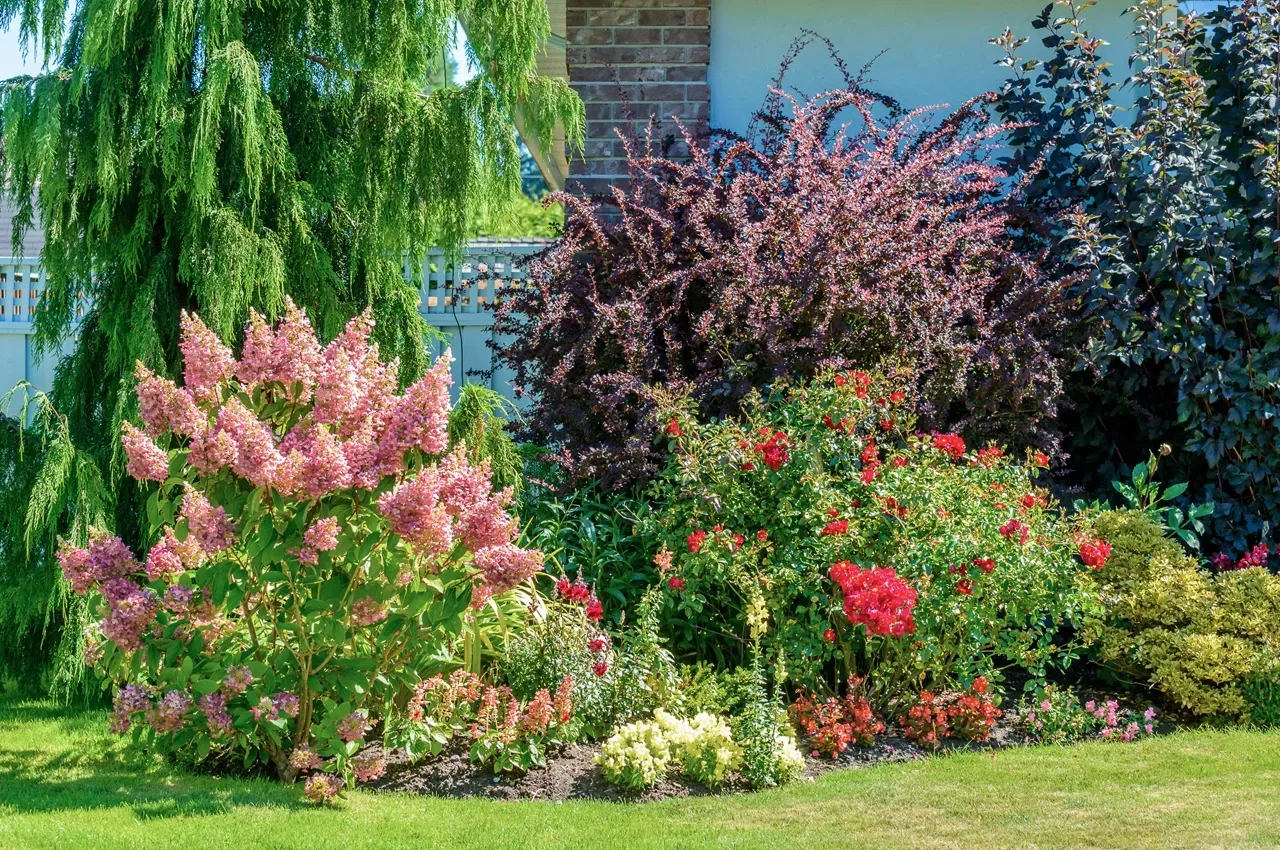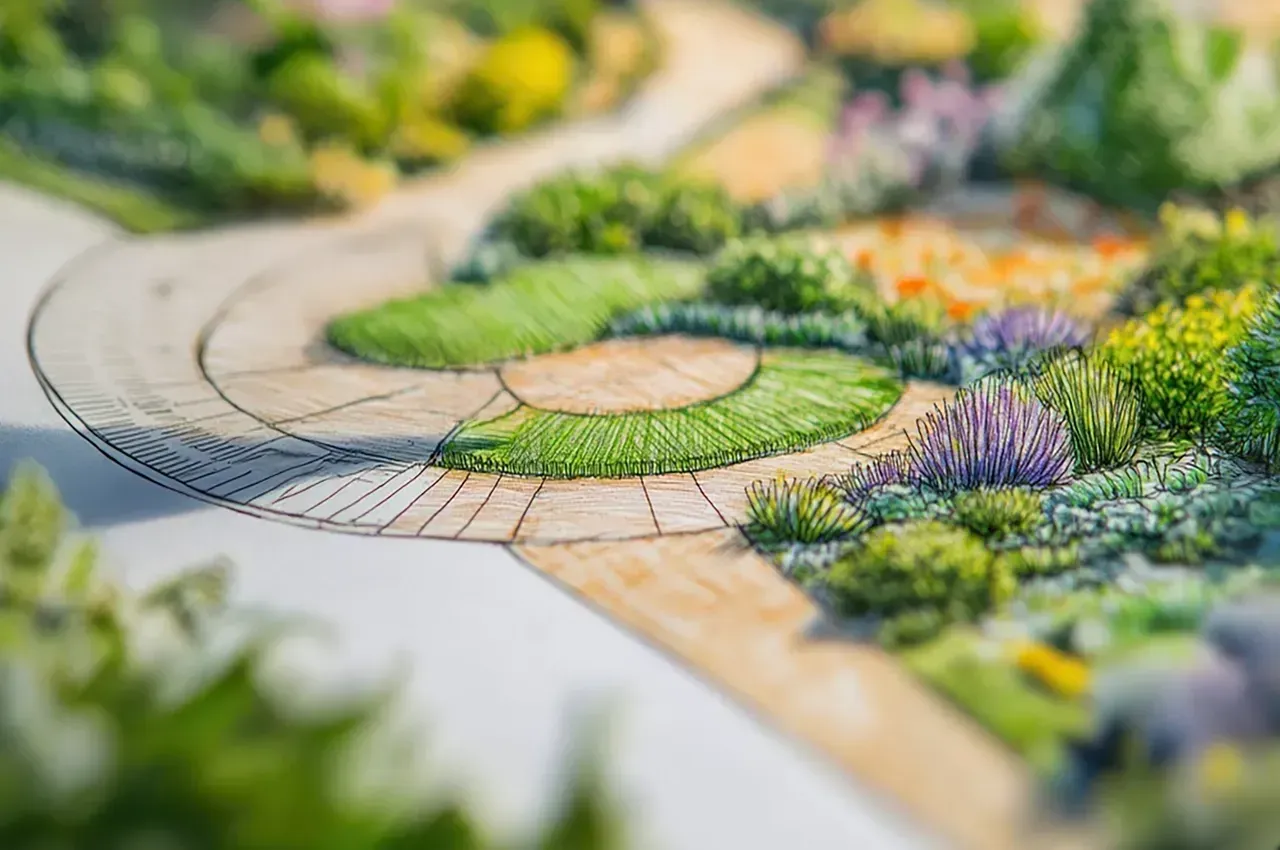How to Identify and Treat Heat Stress in Palm Trees
Palm trees are a popular choice for landscaping due to their tropical appearance and relatively low maintenance requirements. However, they can be susceptible to heat stress, particularly in regions with extremely high temperatures. Understanding how to identify and treat heat stress in palm trees is crucial to ensure their health and longevity. In this blog, we’ll explore what heat stress is, how to identify it, methods for prevention, and treatment options for heat-stressed palms.
What is Heat Stress?
Heat stress occurs when palm trees are exposed to prolonged periods of high temperatures and intense sunlight without adequate water or shade. Heat stress can reduce photosynthesis, lead to dehydration and wilting, and interfere with the tree’s ability to absorb nutrients.
Causes of Heat Stress in Palms
- High Temperatures: Extended exposure to temperatures above 85°F (29°C) can lead to heat stress in palm trees, particularly if they are not well-acclimated.
- Insufficient Water: Lack of adequate watering during hot periods exacerbates heat stress, as the tree cannot maintain its internal moisture balance.
- Poor Soil Conditions: Soil that does not retain moisture well or has poor drainage can contribute to heat stress.
- Inadequate Shading: Young or newly transplanted palms are especially vulnerable if not provided with temporary shade during the hottest parts of the day.
How to Identify Heat Stress in Palms
Recognizing the signs of heat stress early can help prevent further damage and allow for timely intervention.
Common Symptoms and Signs of Heat Stress in Palms
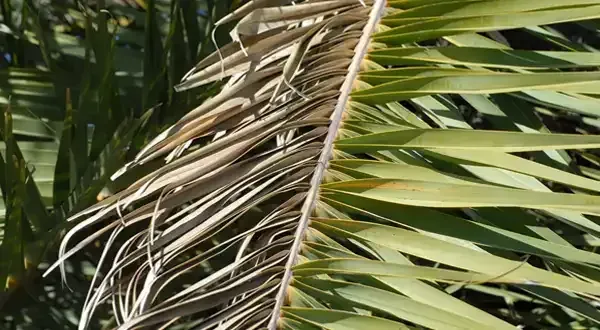
Wilting or Drooping Fronds
One of the earliest signs of heat stress is the wilting or drooping of the palm fronds.

Yellowing or Browning Leaves
Heat-stressed palms often show yellow or brown discoloration of the leaves, starting from the tips and edges.
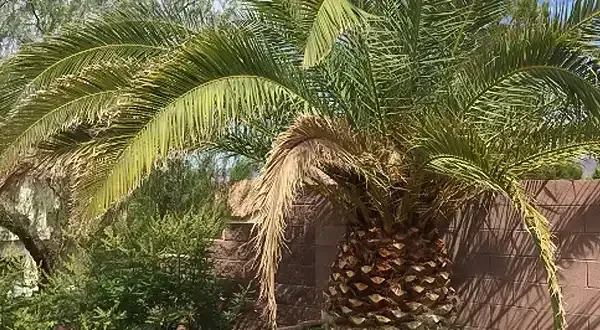
Leaf Scorch
Severe heat stress can cause the edges of the leaves to turn brown and crispy, a condition known as leaf scorch.

Slow or Stunted Frond Growth
Heat stress can slow down the growth rate of the palm, resulting in stunted or malformed new fronds.
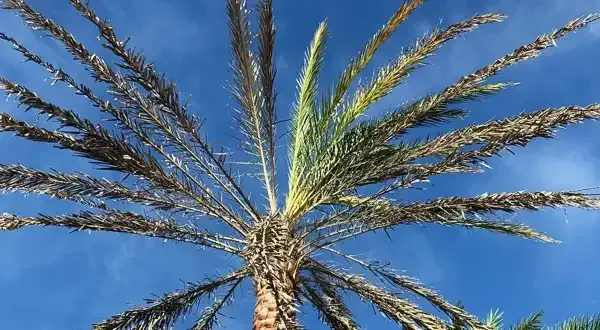
Premature Leaf Drop
In extreme cases, palms may shed their leaves prematurely as a defense mechanism against heat stress.
Differences Between Heat Stress and Other Palm Tree Issues
- Nutrient Deficiencies: Unlike heat stress, nutrient deficiencies often cause uniform yellowing of older leaves while new growth remains green.
- Over-Watering and Under-Watering: Too much water may cause palm fronds to yellow and too little water may cause browning of palm fronds. Ensure that the soil fully dries after watering.
- Pests: Pest infestations typically show specific signs such as holes, sticky residue, or visible insects.
- Diseases: Diseases may present with irregular patterns of leaf discoloration, spots, or fungal growth, which differ from the uniform browning caused by heat stress.
How to Prevent Heat Stress in Palms
Preventing heat stress involves several proactive measures to protect palm trees from high temperatures.
- Proper Planting Location and Spacing: Choose planting locations that provide some afternoon shade, particularly for young palms. Ensure adequate spacing to allow air circulation.
- Selecting Heat-Tolerant Species: Opt for palm species that are naturally adapted to high temperatures, such as the Date Palm or Canary Island Date Palm.
- Gradual Acclimatization: Gradually acclimate young palms to full sun by slowly increasing their exposure over several weeks.
- Fertilization: Feed the palm with a balanced fertilizer to support recovery and encourage new growth.
- Monitoring: Regularly inspect the palm for signs of improvement or continued stress. Adjust care routines as needed based on the tree's condition.
How to Treat Heat-Stressed Palm Trees
If your palm tree shows signs of sun damage, prompt treatment can help it recover.
- Increase Water Supply: Water the palm deeply to replenish moisture levels. Focus on the root zone and avoid overwatering.
- Apply Mulch: Add or replenish mulch around the base of the palm to conserve moisture and protect the roots from heat.
- Provide Temporary Shade: Use shade cloths or other materials to provide temporary shade during the hottest part of the day.
Maintaining Palm Trees for Long-Term Health
Long-term health and resilience of palm trees can be ensured through consistent and appropriate care practices.
- Regular Watering: Maintain a consistent watering schedule that matches the palm’s needs, adjusting for seasonal variations.
- Soil Management: Ensure the soil remains fertile and well-draining by periodically adding organic matter and checking pH levels.
- Routine Fertilization: Follow a regular fertilization schedule with a palm-specific fertilizer to provide essential nutrients.
- Pruning Practices: Prune palms judiciously, removing only dead or damaged fronds to promote healthy growth without causing stress.
- Pest and Disease Management: Keep an eye out for pests and diseases, treating any issues promptly to prevent them from weakening the palm.
By understanding and implementing these practices, you can protect your palm trees from heat stress and ensure they remain healthy and vibrant, even during the hottest summer months.
Proper identification, prevention, and treatment of heat stress will help your palms thrive and maintain their tropical beauty in your landscape.
Palms Winter Protection Package
We offer seasonal Palms Care Packages to ensure that your investment is protected during Winter and ready to glow in Spring.
Recent Posts
Proud member of the
Texas Nursery & Landscape Association
Please feel free to contact us via the form below. We will give you an answer as soon as possible!
Contact Rosehill Palms
We will get back to you as soon as possible.
Please try again later.
Rosehill Palms | Developed by Urdaneta Group WSI | All Rights Reserved 2025

